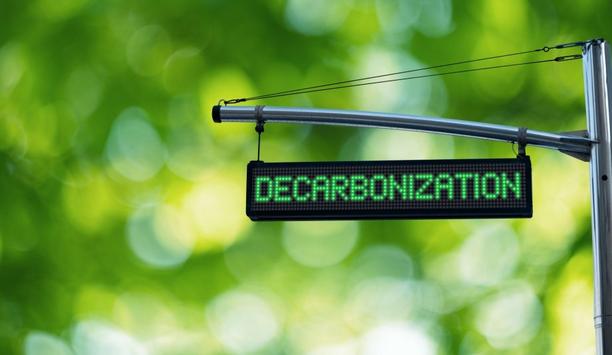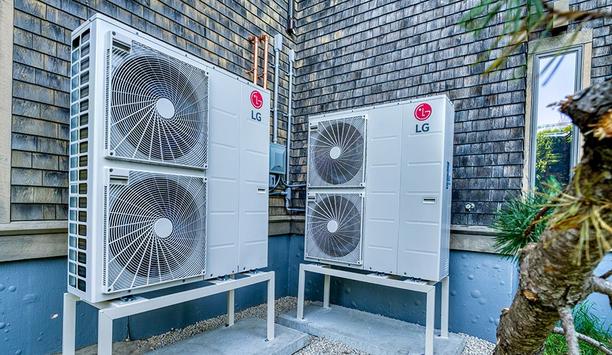A series of tests conducted by The Copper Sustainability Partnership (CuSP) have revealed that plastic pipes pose significant fire safety risks, with three different types of plastic pipe all completely burning in under ten minutes.
Plastic pipes release dangerous amounts of smoke and toxic gases when burned, including carbon monoxide, carbon dioxide, and nitrogen oxide. The tests also revealed that hydrogen cyanide was released from multi-layer composite pipes when burning for just eight minutes.
Plastic Under Fire campaign
To encourage plumbers to think twice about the piping materials they install in people’s homes, CuSP’s Plastic Under Fire campaign exposes the deadly risks associated with plastic pipes in the event of a fire.
The tests, conducted in laboratory conditions, simulated real-life fire scenarios to measure how different pipe materials respond when exposed to flames. The four common types of pipes tested for smoke density, burn time, and toxicity included cross-linked polyethylene (PEX), corrugated stainless-steel tubing (CSST), multi-layer composite pipe (MLCP,) and copper.
Test results
CSST pipes were found to spread fire quickest, producing 761 times more smoke than copper pipes
Results show that PEX is the most toxic material when burned, releasing large quantities of harmful gases that threaten health. During the test, PEX pipes completely burned in under three minutes. In a building fire, this would seriously limit evacuation efforts.
CSST pipes were found to spread fire quickest, producing 761 times more smoke than copper pipes within the first four minutes of burning. High levels of smoke can accelerate fire spread by preheating surrounding areas and significantly reduce visibility during a fire – potentially hampering evacuation efforts. PEX pipes ranked second worst for smoke density, producing 507 times more than copper pipes.
MLCP
MLCP – a material that has been growing in popularity with plumbers due to its low cost and ease of installation – was found to cause serious safety risks, taking just over five minutes to burn completely.
This is an alarmingly rapid rate when compared with copper, which does not burn due to its high melting point of 1,085C – higher than the temperature of most building fires – making it the safest material to install.
fatal health impacts
Prolonged exposure to carbon monoxide over one to two hours can lead to serious tissue damage
The potentially fatal health impacts of plastic pipes cannot be underestimated. When burned for eight minutes, MLCP produced 248 times more carbon monoxide than a copper pipe, and PEX produced 209.5 times more in the same time frame.
Carbon monoxide is a poisonous gas that can make humans seriously ill when breathed in. Over a short period, it can cause headaches, dizziness, nausea, confusion, chest and muscle pain, and shortness of breath. Prolonged exposure to carbon monoxide over one to two hours can lead to serious tissue damage or even death.
PEX pipe
Furthermore, the PEX pipe produced a staggering 5,284 times more carbon dioxide than a copper pipe in eight minutes. Carbon dioxide behaves as an asphyxiant and when inhaled at higher levels, it can cause increased cardiac output, elevated blood pressure, and increased arrhythmias.
Not to mention the impact of carbon dioxide on the environment – adding to the greenhouse effect and causing global temperature to rise.
hydrogen cyanide: An additional toxin
Reactions may include seizures, loss of consciousness, cardiorespiratory depression
Crucially, another test revealed the presence of an additional toxin: hydrogen cyanide. This toxic substance was detected when MLCP was burned, emitting 1.25 mg/m2 in 8 minutes, in contrast to the 0 mg/m2 produced by copper.
Hydrogen cyanide is highly toxic and potentially fatal upon exposure, with symptoms including central nervous system effects, and muscular and neurological disturbances. Reactions may include seizures, loss of consciousness, cardiorespiratory depression, and in extreme cases, death.
fire safety implications
Andrew Surtees, Co-Founder of CuSP, said, “These findings underline the critical importance for manufacturers and installers of considering the fire safety implications of different piping materials."
"Plastic pipes pose a serious risk both to human life and building structures, producing large amounts of smoke and a series of toxic chemicals in a fire. Particularly in high-rise buildings, where fire can spread quickly up vertical voids, the use of plastic pipes could be fatal."
choice of pipe
“For plumbers, the choice of what pipe they are installing should not just be about what is the quickest or cheapest option – but about the long-term implications for people and the environment."
"Copper pipes are proven to limit the spread of fire and produce the least toxic chemicals, making them the safest choice for our buildings and their occupants.”

















